Case Studies
This case study highlights a Northern California based healthcare system, which includes more than 24 acute care hospitals and 200 clinics. Like many systems, optimal patient care is a priority; however, their approach is unique in its focus on an integrated, team-based approach bolstered by the adoption of innovative technologies.

There’s no better benefit than being right.”
– Brad Angeja, MD, Cardiologist
The traditional approach guiding coronary artery disease (CAD) diagnosis and management relies primarily on stress testing—despite widely recognized shortcomings—costing billions of dollars globally every year due to missed diagnoses and unnecessary diagnostic testing. Diagnosing CAD is often subject to interpretation, highly variable, and particularly vulnerable to snap judgement decisions when made during an invasive procedure.
We joke that nuclear medicine is unclear medicine, because the images are blurry. CT with the HeartFlow Analysis brings the diagnosis into focus. I feel like I’m putting on glasses and seeing better, and it’s a great feeling.”
– Brad Angeja, MD, Cardiologist
Realization of a successful CTA + HeartFlow program impacts not only patient outcomes, but also operational efficiency and program success. Patients and staff benefit from a “one stop, closed loop test” that encourages dialogue between specialties, improves overall CT quality and interpretation, and beyond making a more accurate diagnosis, provides powerful risk stratification and prognostic information that helps guide medical therapy strategies.

We’ve seen literally hundreds of studies that prove that coronary CT is not just a problem solving tool but really is the most powerful firstline diagnostic test for the workup of coronary artery disease. What the HeartFlow Analysis brings to coronary CT is the ability to understand what a blockage means.”
– Eric Flagg, MD, Radiologist
One of the striking differences between the HeartFlow Analysis compared to other tests is the quality and clarity of data provided in a simple-to-read, interactive 3D model of a patient’s coronary arteries. Interpretation is simplified and impact to patient education is transformed.
Leading with a focus on “what’s right for the patient” sets an important standard. With this goal in mind, identifying and trusting in a new, yet proven pathway is essential, as well as taking a multi-disciplinary, collaborative approach to adoption.
The key point where HeartFlow comes in is that it enhances the dialogue after the scan. The more robust the communication between specialties taking care of patients, the better the patient care that’ll be achieved.”
– Eric Flagg, MD, Radiologist
With competing tests to choose from, deciding which one to use has historically been confusing. Shifting to a CTA + HeartFlow frontline strategy for patients presenting with symptoms of coronary artery disease, streamlines diagnosis, provides clarity and gives confidence to physicians and patients of the final treatment plan.


This is a common case in which an abnormal stress test would have resulted in a diagnostic angiogram to view the coronary arteries for the first time during the procedure. In contrast, CTA and HeartFlow provide precise anatomic and physiologic information indicating the impact blockages have on blood flow, which allows the interventionalist to pinpoint problem areas and plan a procedure in advance of the cath lab.
This is another common case, in which plaque seen on CTA would have led to an invasive diagnostic angiogram. Pairing CTA with the HeartFlow Analysis instead provides confidence that if the blockages are not flow limiting, as in this case, a patient can be safely treated medically, avoiding the resources and risks associated with invasive tests.
68-year-old-man with high blood pressure, high cholesterol, and squeezing chest tightness while walking, starting 2 months prior.
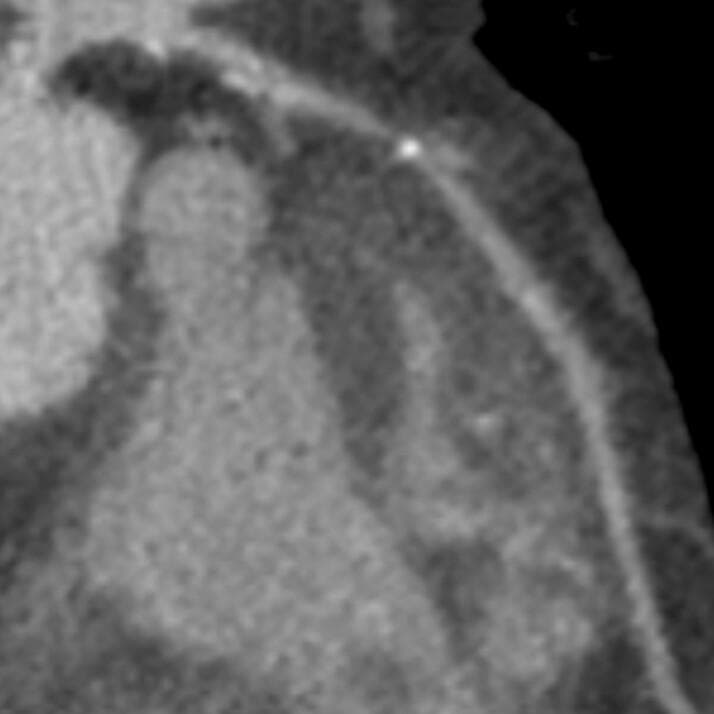
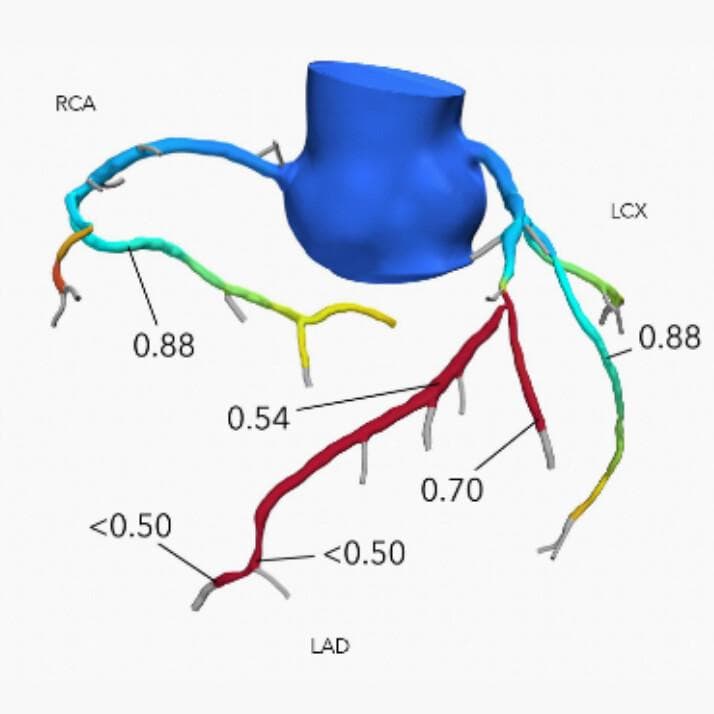
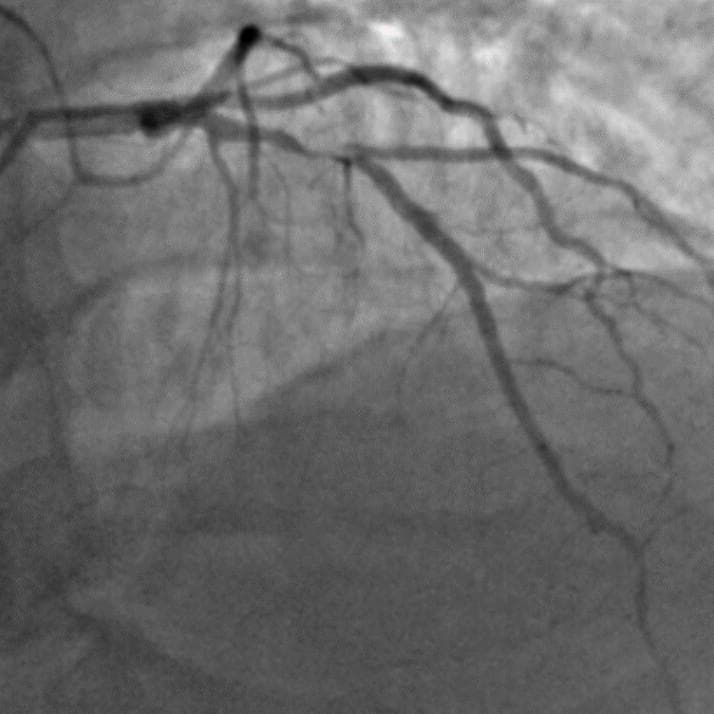
68-year-old-woman with positional chest pain and prior equivocal stress echo, then a normal nuclear scan.
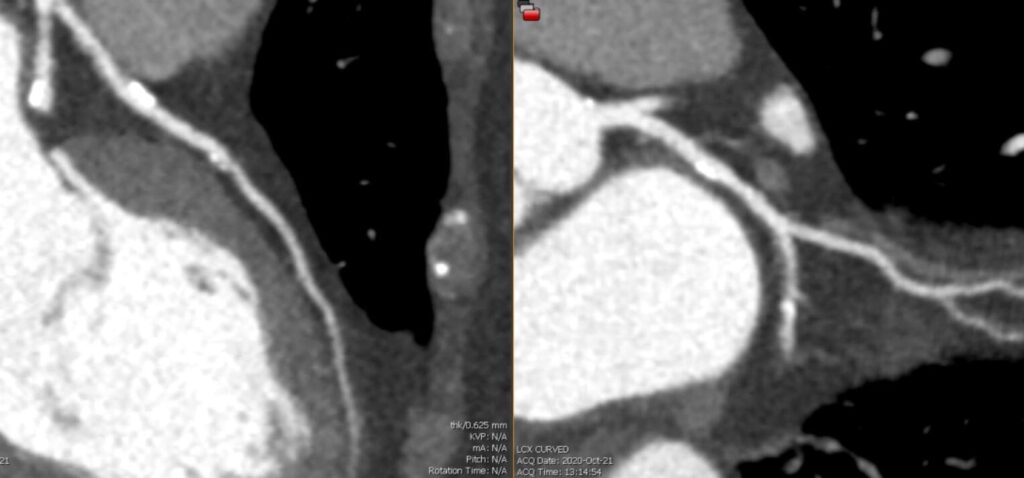
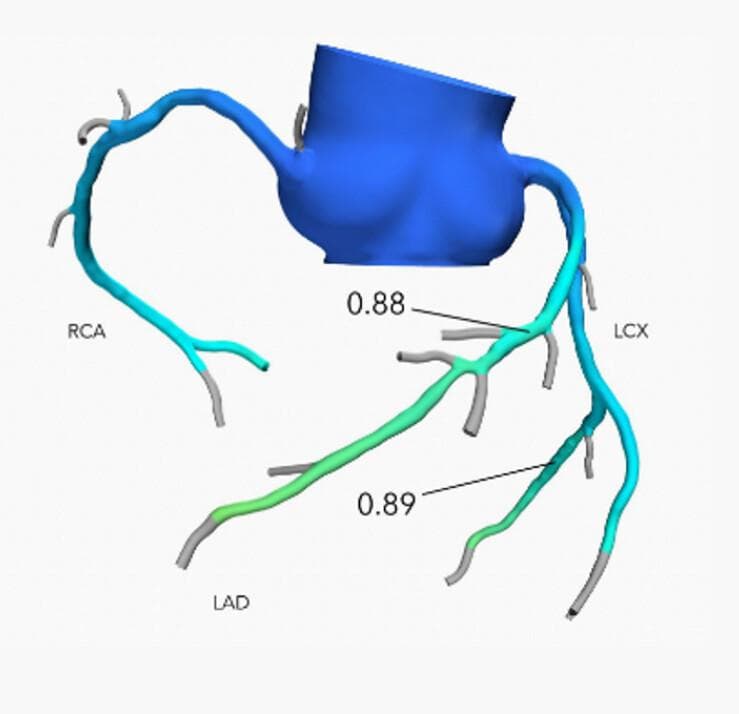
I’ve had people come to me, excited about hearing that they can get a heart scan and have the ability to see their arteries and see the colors of the HeartFlow Analysis. From the standpoint of patient understanding, education, consent, adherence to therapy, I think they are much more engaged. It’s more clear for the patient, and we can achieve that without a half a day in the office or overnight stay, which provides a much better patient experience.”
– Brad Angeja, MD, Cardiologist
Doctors Angeja and Flagg are co-leads of the CT + HeartFlow program and are responsible for the expansion of the CTA program across numerous sites throughout their system.


REFERENCES




The information provided by the HeartFlow Analysis is intended to be used in conjunction with the patient’s clinical history, symptoms, and other diagnostic tests, as well as the clinician’s professional judgement. The HeartFlow Analysis may not be appropriate for all patients. See indications for use for more information. The HeartFlow Analysis, featuring the FFRCT Analysis, RoadMapTM Analysis, Plaque Analysis, and HeartFlow Planner, has received FDA Clearance in the United States of America. The FFRCT Analysis and HeartFlow Planner are CE Marked in Europe and the United Kingdom and approved in Japan and Canada. The HeartFlow Analysis, featuring FFRCT Analysis, RoadMapTM Analysis, Plaque Analysis, and HeartFlow Planner, is commercially available in the United States. The FFRCT Analysis and HeartFlow Planner are commercially available in the United Kingdom. The FFRCT Analysis is also commercially available in Europe, Japan, and Canada.
© 2024 HeartFlow, Inc. | HeartFlow and the HeartFlow logo are registered trademarks of HeartFlow, Inc. Additionally, RoadMap is claimed as a trademark of HeartFlow, Inc. www.heartflow.com | 331 E Evelyn Ave, Mountain View, CA 94041
*Required fields
If you would like to request to have the HeartFlow Analysis available at a location near you, please submit your information below with details of the institution. We will share this information with the institution, but it will not guarantee HeartFlow will become available.
*Required fields
オンライン提出フォームから研究助成金を申請してください。
HeartFlow FFRCT 分析は、有資格の臨床医による臨床的に安定した症状のある冠状動脈疾患患者への使用を目的とした個別化された心臓検査です。 HeartFlow Analysis によって提供される情報は、資格のある臨床医が患者の病歴、症状、その他の診断検査、および臨床医の専門的判断と組み合わせて使用することを目的としています。
ハートフロー分析に関する追加の適応情報については、次のサイトをご覧ください。www.heartflow.com/indications.
さらに質問がある場合は、このメッセージを閉じてフォームに記入するか、サポート チームにお電話ください。: 877.478.3569.
The HeartFlow FFRCT Analysis is a personalized cardiac test indicated for use in clinically stable symptomatic patients with coronary artery disease by qualified clinicians. The information provided by the HeartFlow Analysis is intended to be used by qualified clinicians in conjunction with the patient’s history, symptoms, and other diagnostic tests, as well as the clinician’s professional judgement.
For additional indication information about the HeartFlow Analysis, please visit www.heartflow.com/indications.
If you have additional questions, close out of this message to complete our form or call our support team: 877.478.3569.Please use our online submission form on the Clinical Research Page to apply for research grants.
Thank you for your interest!

Executive Vice President and Chief Medical Officer
Campbell brings a wealth of experience to HeartFlow, where he serves as the Chief Medical Officer. Prior to joining HeartFlow, he was the Chief Scientific Officer and Global Head of Research and Development at Cordis Corporation, Johnson & Johnson, where he was responsible for leading investments and research in cardiovascular devices. Prior to Cordis, he was Associate Professor of Medicine at Harvard Medical School and the Harvard-M.I.T. Division of Health Sciences and Technology, and Director of the Cardiac Catheterization and Experimental Cardiovascular Interventional Laboratories at Brigham and Women’s Hospital. He served as Principal Investigator for numerous interventional cardiology device, diagnostic, and pharmacology trials, is the author of numerous journal articles, chapters, and books in the area of coronary artery and other cardiovascular diseases, and was the recipient of research grant awards from the NIH and AHA.
He received his A.B. from Harvard College and his M.D. from Harvard Medical School.